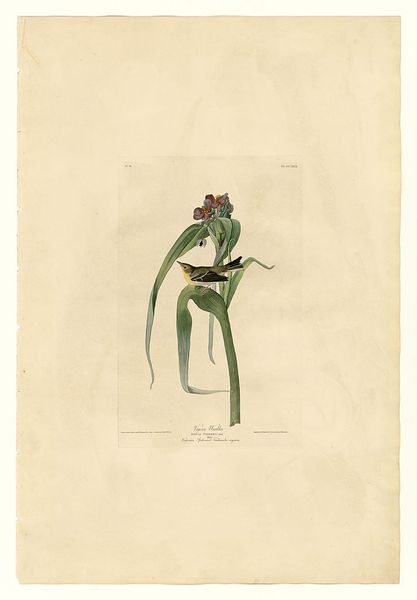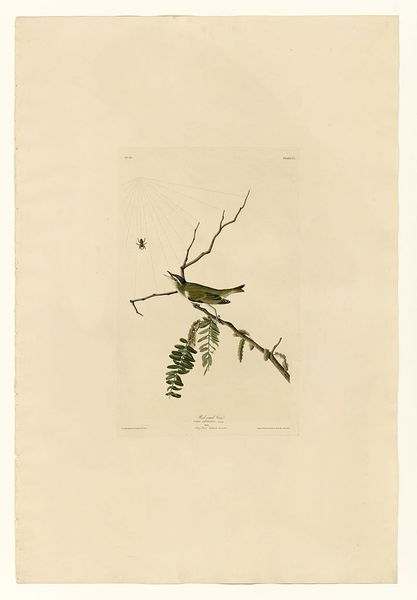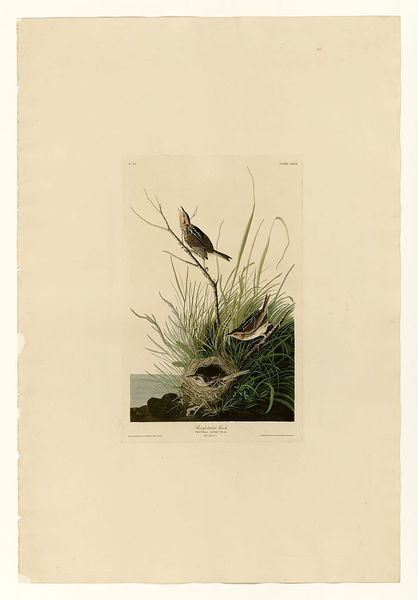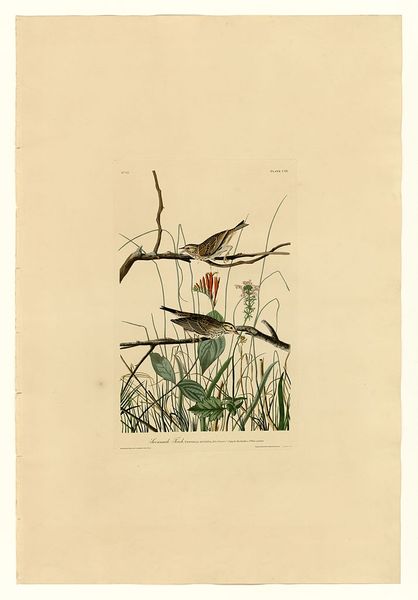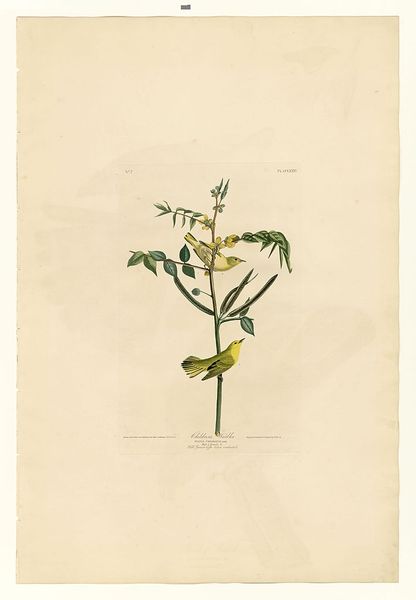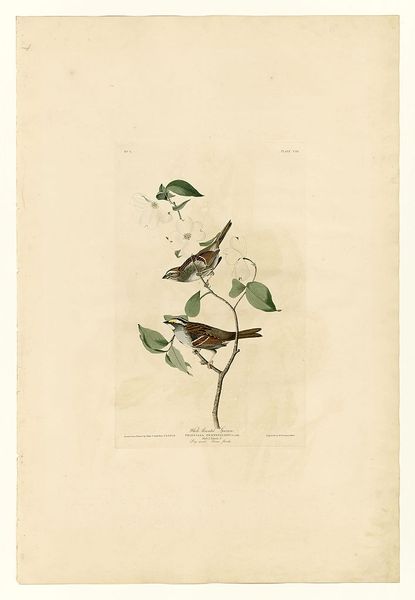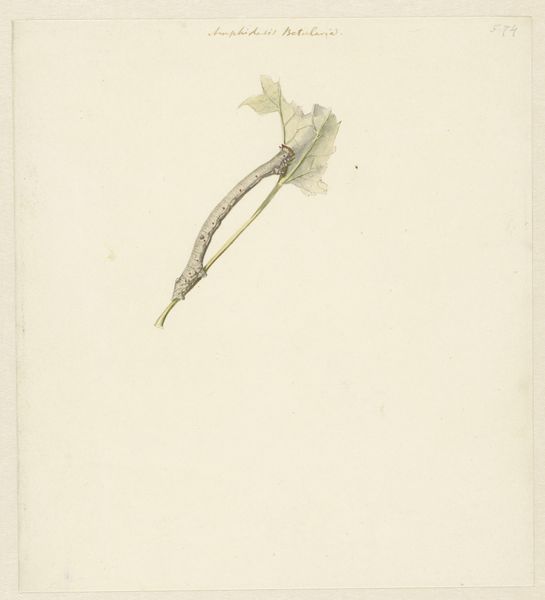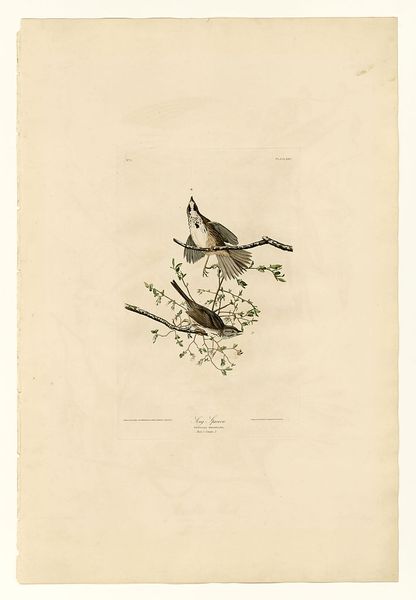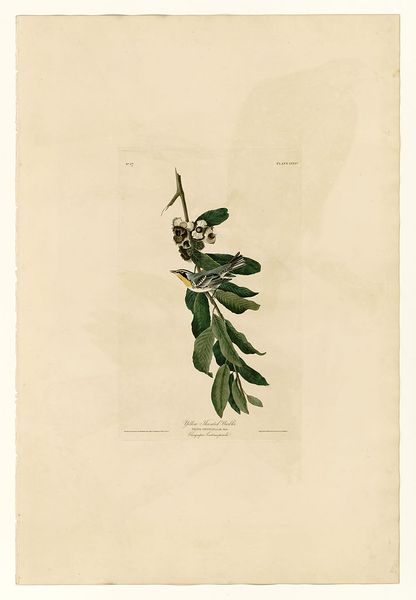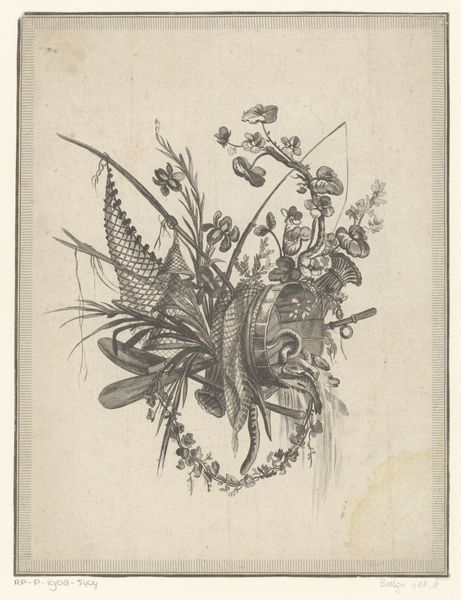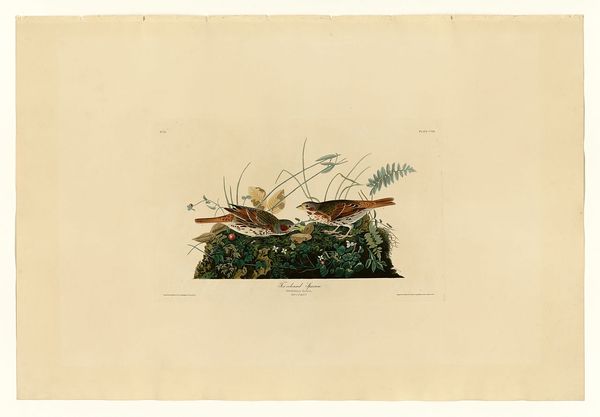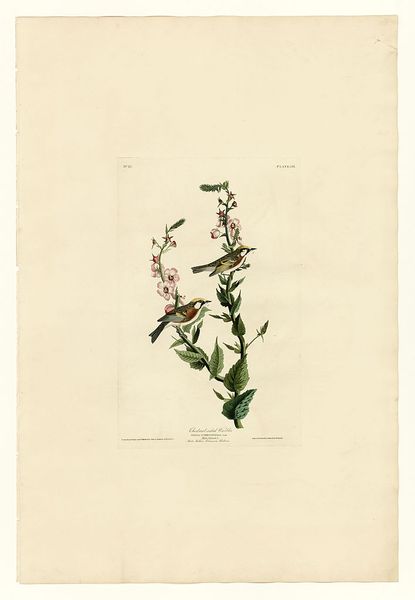
painting, print, watercolor, engraving
#
ink paper printed
#
painting
# print
#
old engraving style
#
landscape
#
bird
#
watercolor
#
plant
#
romanticism
#
watercolour illustration
#
botany
#
naturalism
#
engraving
Copyright: Public domain
Editor: This is "Plate 100 Marsh Wren," an engraving and watercolor by John James Audubon. I find the nest, made of interwoven reeds and grasses, especially captivating. How does its materiality inform the work's broader meaning? Curator: The materiality is key. Consider the paper itself – likely hand-made, a valuable commodity reflecting early 19th-century production. The watercolor and engraving combine, signifying different skills and levels of artisan labor. How does the contrast between the detailed bird rendering and the suggestion of environment change your thinking? Editor: That’s interesting, because I was also thinking about the plant. Now I’m considering the contrast – the very precise representation of the birds versus the almost gestural indication of the reedy plants below, which brings me to a question. Does that choice impact how we consider Audubon's broader social and economic context? Curator: Precisely. Audubon presented these prints as scientific illustrations, thus as 'high art,' but look closer: these prints were a commercial enterprise, relying on workshops employing engravers, colorists – a whole system of production, with specific tasks given to laborers. How does this understanding impact our appreciation of the finished "art" object? Editor: So, by examining the materials and production process, we're really unpacking the complexities of labor and commerce inherent in this artwork. It's not just about the birds, but the system that brought them to us! Curator: Exactly. By investigating these details, we confront not only artistic skill, but a network of human activity, reflecting an economy reliant on both skilled and unskilled craftsmanship, and that tells us a great deal. Thanks!
Comments
No comments
Be the first to comment and join the conversation on the ultimate creative platform.
